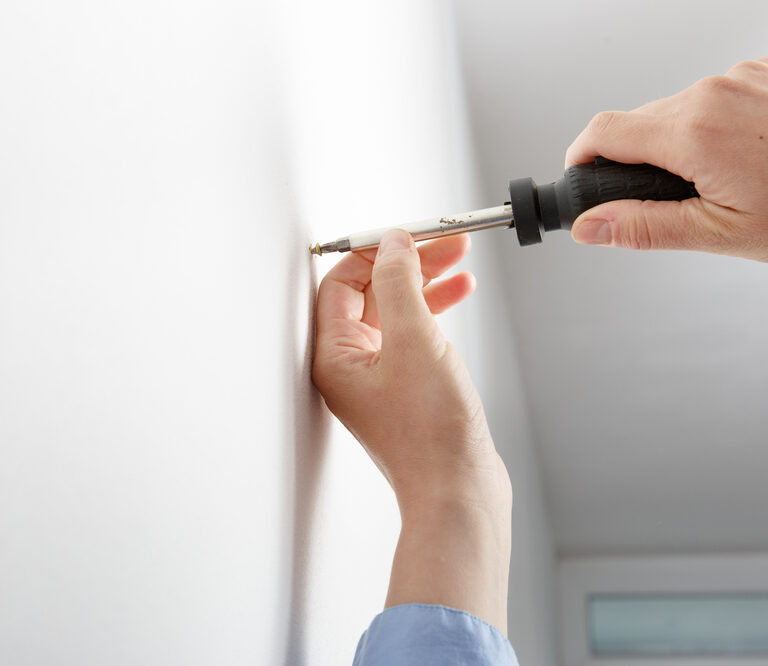Need to hang something heavy on your wall?
Then grab yourself a drywall anchor, a specially designed bit that bites into the drywall for a secure fit. When properly installed, the right drywall anchor will provide enough support to sustain items up to 50 pounds (or maybe even more), perfect for that bulky TV, bookshelf, mirror, or picture frame.
These nifty little devices only cost a couple of bucks, but you’ll need a touch of technical know-how to drive them in without damaging the wall. In this guide, we’ll explain how to install the four most common drywall anchors so you can safely fasten things to your wall with minimal fuss.
The Common Drywall Anchor Types
Although numerous anchor types exist, we’ll only cover the four most common options as these are what you’ll most likely use at home.
- Plastic sleeve/expansion anchor: a common anchor type in which the plastic sleeve expands to bite into the drywall. Only suitable for supporting lightweight items like picture frames and small shelves up to 15 pounds.
- Threaded/self-drilling anchor: these plastic anchors get their name from the screw-like thread, which drives into the drywall for additional support. As a result, threaded anchors can handle heavier loads up to 25 pounds.
- Molly bolts: These heavy-duty metallic anchors aren’t just for drywall; you can use them on other materials like concrete as well. Four wings on the end of the anchor pop out for a secure hold on the other side of the wall, so you must purchase the right length for it to work. The anchors are suitable for up to 50 pounds.
- Toggle bolts: Toggle bolts are among the strongest anchors of them all and, when properly installed, can support up to 50 pounds. You’ll need a big enough hole in the drywall to slip the toggle through, which opens outwards to grasp onto the other side of the wall.
Why You Need to Use an Anchor for Drywall
Whether you’re a newbie DIYer, or you’ve just never needed to drill into drywall, you might be wondering why anchors are essential. After all, couldn’t you hammer a nail into the drywall and be done with it?
The drywall anchor, as the name suggests, provides a powerful anchor point that distributes weight through the drywall, thus allowing it to support a substantially heavier load.
While you could use a nail to hang a lightweight paper calendar, if you hung something even remotely heavy like a picture frame on it, the drywall would crack and crumble. Drywall is made from lightweight, malleable materials, so anchors are essential for avoiding damage when you decide to hang things.
Heavy-duty options like molly bolts and toggle bolts clasp onto the other side of the drywall for even more support—perfect when you need to hang bulky items.
How to Use a Plastic Sleeve/Expansion Anchor
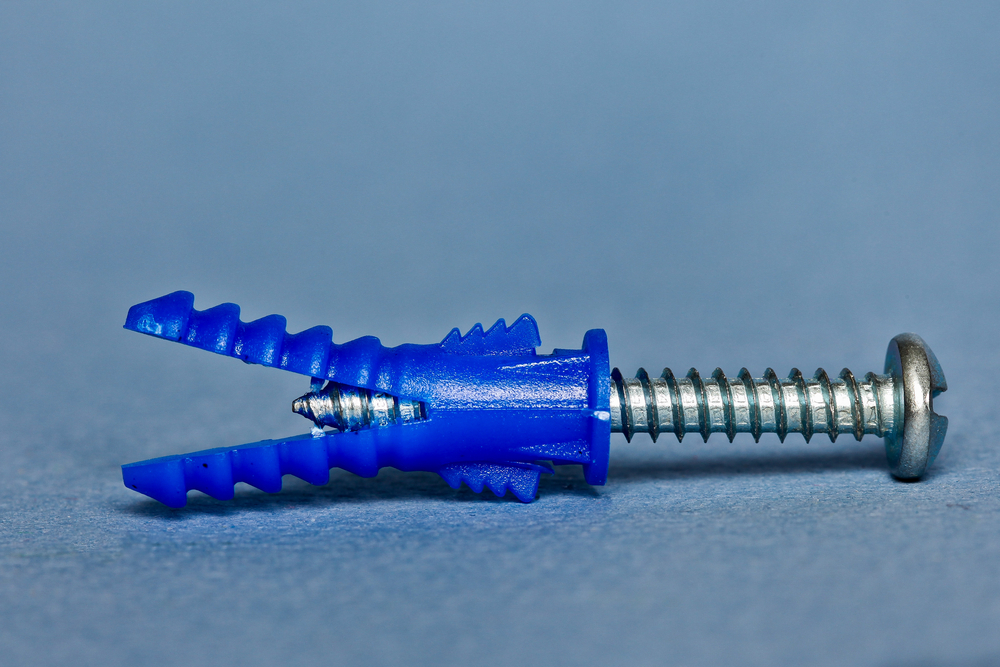
Expansion anchors aren’t designed to withstand a tremendous amount of weight, so give these a miss if you’re planning to hang up something heavy. These anchors typically have a weight rating listed on the box—if in doubt, double-check.
- Mark your anchor spot on the wall with a pencil.
- Drill a hole into the drywall with the same-sized drill bit as the anchor.
- Hammer the anchor into the wall gently. If the hole is the right size, it should slide in relatively smoothly with only minor resistance.
- Continue hammering until the anchor is level with the wall.
- Drive the screw almost the whole way into the anchor with an electric drill or screwdriver (leave enough space on the screw to hang your item).
- Hang your item off the part of the screw that sits outside the anchor.
How to Use a Threaded/Self-Driving Anchor in Drywall
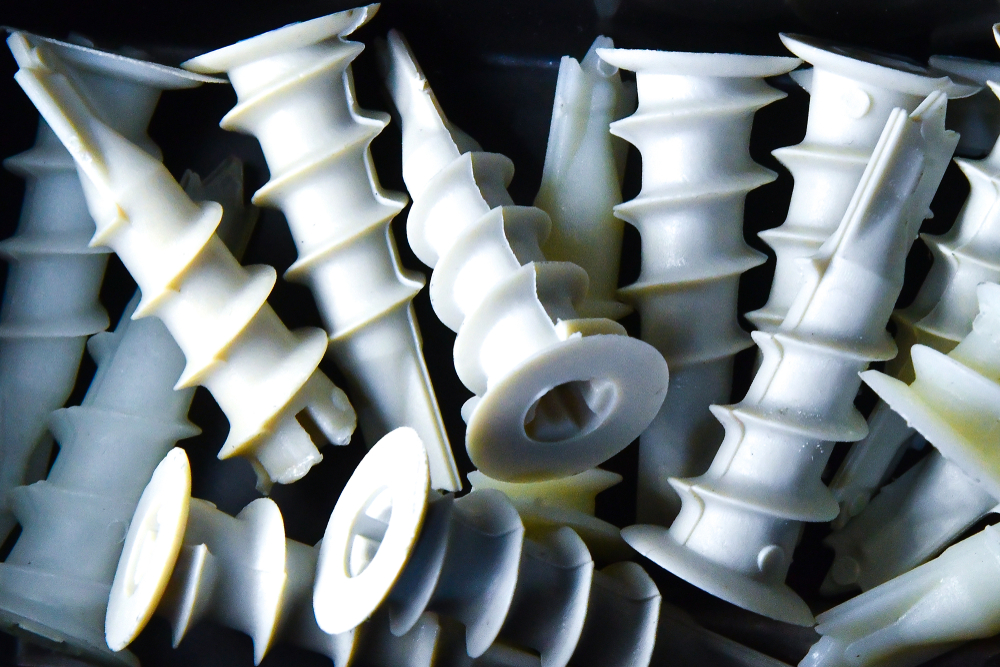
Although threaded anchors aren’t designed to hold heavy items either, they’re powerful enough to support things like small mirrors, shelves, and picture frames.
- Mark your anchor spot on the wall with a pencil.
- Drill a hole into the wall that’s the same size as the tip of the threaded anchor.
- Use a power drill to drive the threaded anchor into the wall.
- Continue driving in the anchor until it sits level with the wall.
- Use a screwdriver or drill to drive the screw into the anchor until you feel heavy resistance.
- Hang your item on the remaining section of the screw.
How to Use a Molly Bolt Anchor in Drywall
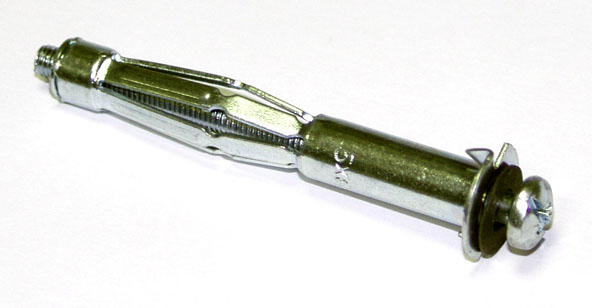
Molly bolts are a heavy-duty solution and super simple to install—but there’s a catch: you need to get bolts of the precise size that corresponds to the thickness of your walls. If not, the four wings that grasp the bolt in place won’t connect with the wall, and the anchor will ultimately fail.
- Mark your anchor spot on the wall with a pencil.
- Drill a hole into the drywall with the same-sized drill bit as the molly bolt.
- Hammer in the molly bolt until the end sits level with the wall.
- Unscrew the screw that comes pre-installed inside the molly bolt and take it out completely.
- Mount or hang your item.
- Drive the screw back in until you feel a strong degree of resistance.
How to Use a Toggle Bolt Anchor in Drywall
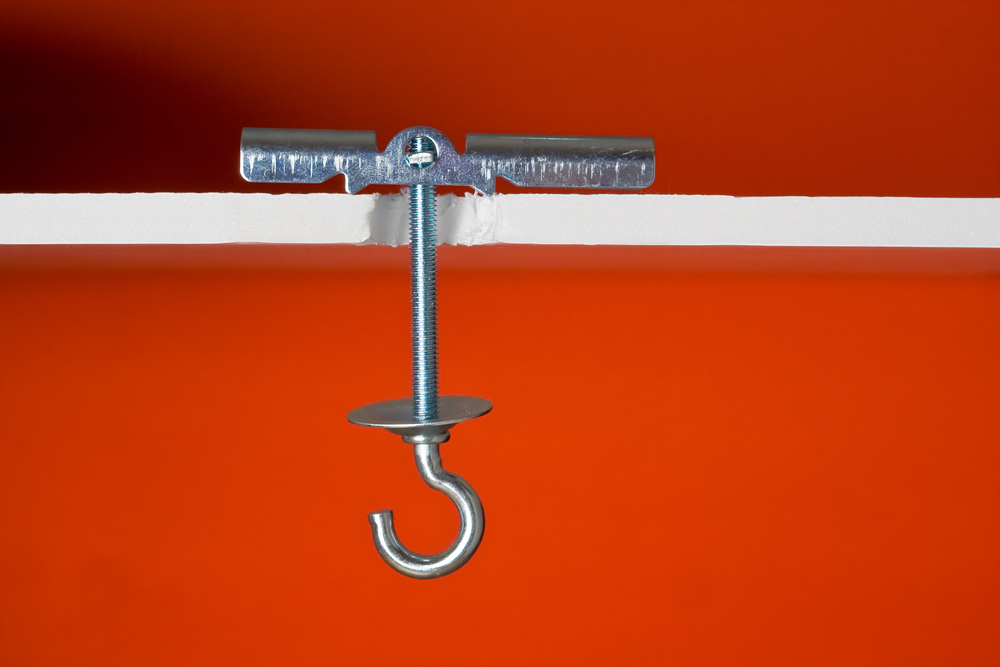
Toggle bolts are about as rigid as they come; an excellent option for mounting heavy items such as shelves and TVs.
Opt for a different anchor type if you want to hang a painting or anything else that dangles from a string. Toggle bolts need something with substance to serve as a washer and stop the screw from being driven the whole way through the wall. Therefore, these are only suitable for mounting, not hanging.
- Mark your anchor spot on the wall with a pencil.
- Drill a hole large enough for the toggle to squeeze through when folded down.
- Feed the bolt through the bracket you will mount onto the wall.
- Thread the toggle onto the bolt (the tip should face the screw head).
- Squeeze the toggle to close it shut.
- Push the toggle and the bolt through the wall together.
- The toggle will open up and grip the wall when it reaches the other side.
- Tighten the bolt until it fits snugly.
What Size Hole Should You Drill for a Drywall Anchor?
The great thing about drywall anchors is they tell you what size hole you need to drill on the packet (or the online description). When purchasing a drywall anchor, grab the corresponding drill bit if you don’t already have one.
If you’re unsure how big your anchor is, you can use a drill bit measuring guide to find out (available at most hardware stores).
How Long Should a Drywall Anchor Be?
With expansion and self-driving anchors, aim for one that’s slightly shorter than the drywall thickness. However, using one that’s a little bit longer won’t be a problem, provided nothing is blocking it on the other side.
Toggle and molly bolts need to have the same length as the thickness of your drywall; otherwise, they won’t clamp onto the other side to provide adequate support. If you don’t know how thick your drywall is, try to find a place to measure it. Failing that, you could read through the construction documents of your home.
How to Use Drywall Anchors: Final Thoughts
Using an anchor to hang stuff on drywall is a straightforward task that even the novice DIYer could attempt.
By selecting the appropriate anchor type and following the steps in our how-to guide, you’ll quickly have somewhere to hang or mount things on your wall. There is no need to pay for pricey professional handyman services when you can get the job done independently.
Oh, and if you’re renting, we highly recommend getting permission from your landlord first.
